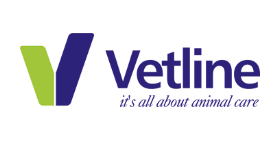Abstract
No doubt bovine generates the majority of the world’s milk, particularly in industrialized nations. However, caprine milk is consumed by more people globally than milk from any other species. Since cow milk is scarce, goat milk and its byproducts are crucial daily food sources of calcium, phosphorus, and protein for people in underdeveloped nations. Goat and cow milk are significantly more in protein and ash than human milk, but less in lactose. Goat milk has the special metabolic capacity to treat malabsorption in patients. In some countries, there has been a significant increase in demand for healthy foods, which has sparked curiosity in milch caprine and its products. Infants and anyone allergic to cow milk can be benefited greatly from goat milk. Such distinctive qualities of goat milk can be helpful in ensuring the future viability of the dairy goat sector.
Key words: Goat milk, protein, metabolic, malabsorption
Introduction
India is a ranker country in caprine milk production, justifying for 29% of total production, (Panchal et al., 2020). Caprine are an essential part of the livestock business due to their capacity to survive in several conditions, making them ideal for landless and marginal farmers. Goats provide a substantial contribution to the supply of milk, its products, as well as to the rural economy and health. In terms of global milk output from various species, goats are ranked third. About 2% of the world’s total annual milk supply is produced by goats. Their global contribution to nutritional and economic well-being, on the other hand, is enormous.
More people drink goat milk than any other single species. Goat milk has more protein and fat digestibility, alkalinity, buffering capacity, and some therapeutic qualities in medicine and human nutrition than cow or human milk. Enhanced digestion, gastrointestinal function and gut microbiological population, better absorption of minerals, desired food consumption, lesser risk of allergy are observed up on consumption of goat milk (Prosser, 2021). In underdeveloped nations, caprine milk along with their products accommodates vital daily food supply of protein, phosphate, and calcium due to a scarcity of cow milk. Increasing interest in dairy caprine and its milk commodities has stemmed from the recent growing demand of healthy foods worldwide. Caprine and bovine milk have a great extent of protein and ash, but lesser extent of lactose as compared to human milk. Goat milk has fewer fat globules and more short and medium chain fatty acids as compared to cow milk, giving it a metabolic advantage in providing energy to developing youngsters and treating malabsorption (Park et al., 2007; Li et al., 2020). The advance trend of healthy food demand in various nations includes interest in goat milk and its products.
Goat milk is also essential for babies and people who are allergic to cow milk. The dairy goat industry’s sustainability is aided by the special qualities of goat milk. Caprine milk and its products are said to have a high level of consumer satisfaction. Rather than this, goats have been mostly neglected in research point of view. To have this greater advantage, goats must now be completely utilized, not only for meat, milk, and milk products but also for the remedial properties.
Nutrient configuration of Goat Milk
Caprine milk has an average total solids content of 12.2 percent, with 3.8 percent fat, 3.5 percent protein, 4.1 percent lactose, and 0.8 percent ash (Table 1). It has more fat, protein, and ash than cow milk, but low in lactose. Goat milk has a lower total casein content but a larger nonprotein nitrogen content than cow milk. Goat and cow milk have 3 to 4 times the protein and ash content of human milk. Goat, cow, and human milks have equal total solids and calorie contents. Smaller fat globules permit for best lipid dispersion and homogeneity in caprine milk, which gives a higher surface area of fat for enhanced digestion by lipases. Caprine milk fat comprises 97-99 % free lipids (about 97 % of which are triglycerides) and 1-3 % bound lipids (about 47 % neutral and 53 % polar lipids).
In goat milk, there are five main proteins: s2-casein (s2-CN), -casein (-CN), -casein (-CN), -lactoglobulin (-Lg), and lactalbumin (La). In goat milk, s2-casein is the most common casein component, but in cow milk, s1-casein is the most common (Montalbano et al., 2016). The disparity in amino acid composition across goat milk casein parts are substantially higher than those between species (goat versus cow).
Goat milk has roughly 134 milligrams of Ca and 141 milligrams of P per 100 g (Table 1). Only ¼ th to 1/6 th of Ca and P are found in human milk. Caprine milk has more Ca, P, K, Mg, and Cl than cow milk and merely Na and S. Lactose content and the molar total of sodium and potassium amounts in goat and other species’ milks have a strong negative connection. Chloride has a positive relationship with potassium and a negative relationship with lactose, but sodium has no relationship with K, Cl, or lactose. Diet, breed, animal, and lactation stage all influence trace mineral concentrations. Goat milk has a higher mineral content than cow milk on average. Goat milk, on the other hand, has a lesser degree of hydration and an inverse association among micelle mineralization and hydration.
Vitamin A levels in goat milk are greater than in cow milk. As caprine have the capability to alter all -carotene in the milk into vitamin A, caprine milk is whiter than cow milk. Goat milk has enough vitamin A and niacin, as well as an abundance of thiamin, riboflavin, and pantothenate. In comparison to cow milk, goat milk is lacking in folic acid and vitamin B12. Cow milk contains five times higher vitamin B9 and vitamin B12 than goat milk, and folate is required for hemoglobin formation. Both goat and cow milk are lacking in pyridoxine (B6), as well as ascorbic acid and calciferol, which should be obtained from other sources.
Goat milk contains similar amounts of lactoferrin, transferrin, and prolactin as cow milk. Human milk has a lactoferrin content of greater than 2 mg/mL, which is 10-100 times higher as compared to goat milk (Table 1).
Table 1. Milk contents of Goat And Cow Milk
| Contents | Goat | Cow |
| Proteins (%) | 3.5 | 3.3 |
| Total casein (g/100 ml) | 2.11 | 2.70 |
| αs1 (% of total casein) | 5.6 | 38.0 |
| αs2 (% of total casein) | 19.2 | 12.0 |
| β (% of total casein) | 54.8 | 36.0 |
| κ (% of total casein) | 20.4 | 14.0 |
| Whey protein (%) | 0.6 | 0.6 |
| Nonprotein N (%) | 0.4 | 0.2 |
| Lactoferrin (µg/ml) | 20-200 | 20-200 |
| Transferrin (µg/ml) | 20-200 | 20-200 |
| Prolactin (µg/ml) | 44 | 50 |
| IgA (milk: µg/ml) | 30-80 | 140 |
| IgA (colostrum: mg/ml) | 0.9-2.4 | 3.9 |
| IgM (milk: µg/ml) | 10-40 | 50 |
| IgM (colostrum: mg/ml) | 1.6-5.2 | 4.2 |
| IgG (milk: µg/ml) | 100-400 | 590 |
| IgG (colostrum: mg/ml) | 50-60 | 47.6 |
Medicinal Properties of goat milk
Antimicrobial Properties: Milk proteins have been shown to serve as building blocks for antimicrobial peptides. The peptides made from a globular multifunctional protein are the most well-known. Additionally, it possesses antioxidant properties, anti-carcinogenic and anti-inflammatory effects.
Treatment of Cardiovascular Diseases: Medium-chain triglycerides, such as fatty acid esters of caproic, caprylic, and capric pathogenic bacteria, are abundant in caprine milk. Goat milk reduced LDL oxidation and had an anti-atherogenic impact.
Treatment of Gastrointestinal Diseases: Intestinal inflammation seen in Intestinal Bowel disease can be compared to colitis. It has been demonstrated that the oligosaccharides (60 – 350 mg/L in mature milk and 200 – 650 mg/L in colostrum) in goat milk have an anti-inflammatory impact.
Treatment of Cancer, Allergy and Others: Due to its different protein structure, namely its casein micelle components, goat milk is believed to be a significantly less allergic alternative to cow milk by numerous studies and anecdotal evidence. In comparison to cow milk, goat milk has shown to significantly alleviate symptoms of eczema, asthma, and minor digestive issues.
Conclusion
Although caprine milk has an equal composition as like cow milk, the importance of caprine milk and its products in human nutrition and well-being should not be overlooked. This milk furnishes critical elements for human nutrition as well as revenue sources for human’s existence in various ecological community across the world. Those with cow milk allergies and other nutritional problems appreciate the contribution of dairy goat products. Proteins, lipids, minerals, vitamins, carnitine, glycerol ethers, enzymes, fat globule size, and casein polymorphisms are only a few of the major ingredients and physical properties in goat milk that are crucial in human diet. It is essential to raise community knowledge about the importance of goat milk for its nutritional and therapeutic properties, to enhance goat breeds in order to boost milk production, and to undertake additional studies and research on goat milk.


Dr. Pallabi Das1 and Dr. Sudhanya Nath2*
1Assistant Professor, Department of Animal Nutrition, M.B. Veterinary College, Rajasthan-314001
2Assistant Professor, Department of Animal Nutrition, Institute of Veterinary Sciences and Animal Husbandry, SOA Deemed to be University, Bhubaneswar, Odisha – 751003
*Corresponding author: sudhanyanath@yahoo.com















